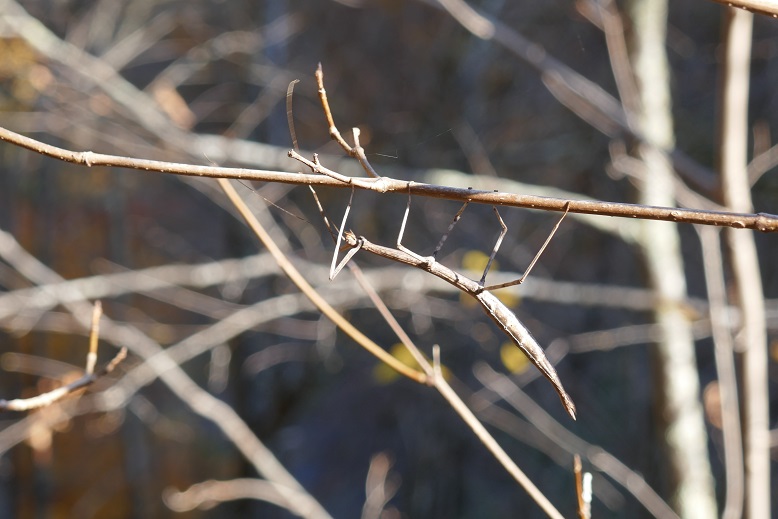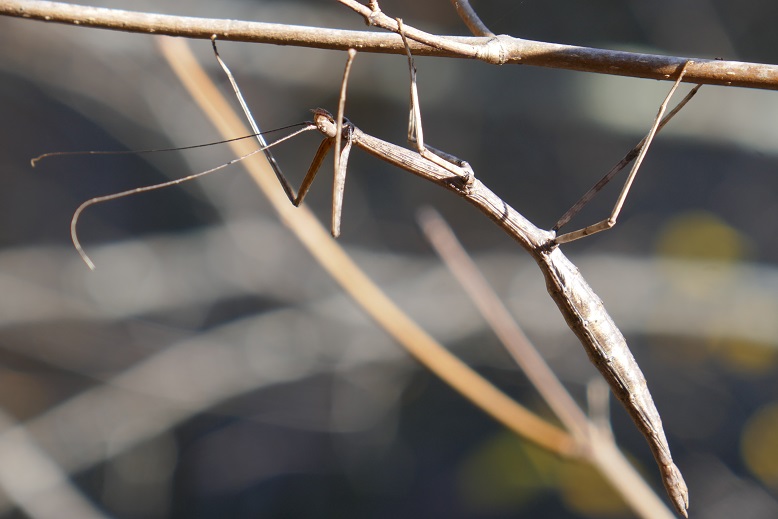

Discovery.
I’m hiking in a magnificent New York State park when I notice this intriguing animal. I discover that it is a male walking stick, and member of the Phasmida family of the order Phasmatodea. This is a male: females are greenish-brown.


Graceful Ballet.
The journey to a nearby branch is a graceful ballet of careful unhurried movements. Limbs outstretch, antennae wave but camouflage is maintained.

Life Cycle.
I’m astounded to learn that there are over 3,000 species of these wonderful animals worldwide. Some are hermaphrodite, and all are herbivores. Some will also feast on bird and small animal droppings. They have evolved to look like a twig or a branch and are so well camouflaged making it hard to be spotted by enemies. Females are slightly larger than males and measure 3.7cm in length, compared with 3cm long males. The 2.5mm eggs are dropped onto the forest floor where they overwinter in leaf litter. They might hatch the following May, or a year later. They are hemimetabolus meaning that there is not a complete metamorphosis and so the eggs hatch into nymphs thereby missing a larval stage. They can have 4-6 moults before becoming fully mature adults. Developing honey bees, on the other hand, are firstly eggs, larvae and then pupae. Unlike walking stick insects, they don’t grow any further once they emerge as adults or imagoes.


Another great find. Well done, Sharp Eyes!
It looks like the stick insects I knew as a youth in Kenya. We used to try and race them but as you say, they are not built for speed. Well spotted!
All the more fun racing such slow animals!
Intriguing post about stick insects. It takes me back to my days as nursery teacher because children find them intriguing as well. And we often housed stick insects in our school.
Well done Anne yes we had them at school too and I looked after them I loved them and found them absolutely fascinating, they even had names! They really are very difficult to see on branches so as Linton says sharp eyes!